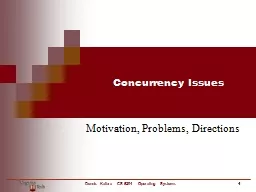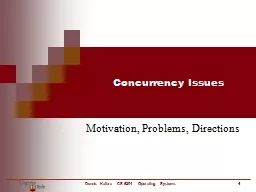PPT-Language Support for Concurrency
Author : marina-yarberry | Published Date : 2016-07-05
Ken Birman 1 Synchronization paradigms Weve looked at critical sections Really a form of locking When one thread will access shared data first it gets a kind of
Presentation Embed Code
Download Presentation
Download Presentation The PPT/PDF document "Language Support for Concurrency" is the property of its rightful owner. Permission is granted to download and print the materials on this website for personal, non-commercial use only, and to display it on your personal computer provided you do not modify the materials and that you retain all copyright notices contained in the materials. By downloading content from our website, you accept the terms of this agreement.
Language Support for Concurrency: Transcript
Download Rules Of Document
"Language Support for Concurrency"The content belongs to its owner. You may download and print it for personal use, without modification, and keep all copyright notices. By downloading, you agree to these terms.
Related Documents














